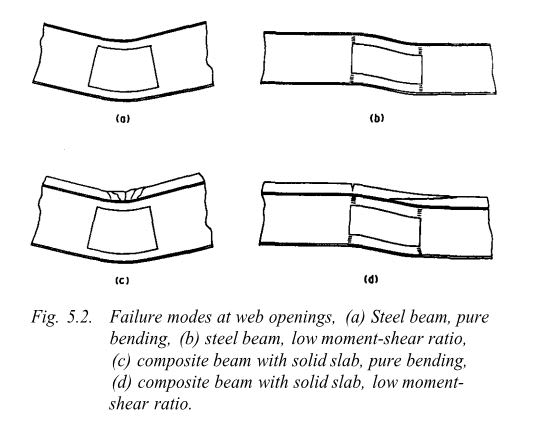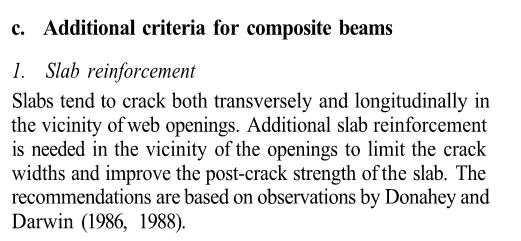It depends on the size and location of the web opening. Personally, I would be concerned if a beam was so “soft” over the web opening that I needed to increase the reinforcing steel in the slab. I don’t recall ever adding additional reinforcing steel in a slab over web openings. Avoid long openings. Favor several smaller square openings over a larger rectangular one so that you don’t have the “soft” condition you’re talking about. If the mechanical engineer needs a wide duct, ask if they can split it in have so that it can run through 2 narrower openings. Adding stiffeners on all sides around the opening will greatly stiffen the portion of the beam above the opening and create a Vierendeel-like truss at the opening. Don’t allow anyone to bully you into putting an unreasonably deep (or wide) opening in a beam. Make the beam deeper. Or consider making the beam shallower to get the piping / ductwork under the beam. (Short story: I designed a building twenty years ago and the architect did have sufficient floor-to-floor height. The maximum permitted beam depth was 8”. And even W8’s were too deep. They needed to run electrical conduit and small sprinkler pipes through the webs, because there was not enough room to go under the beams. We perforated the webs of most of the beams with small round holes at mid-depth at 12” on center. Another short story: Not long ago we designed a project and the architect and mechanical engineer told us they needed to perforate a beam with multiple, large web openings – after the steel was erected. We asked them months earlier about whether any such openings were required. No response. We made it work but it was not pretty. Actually, it was a work of art. Multiple smaller openings with stiffeners on all sides around most of the openings.)


